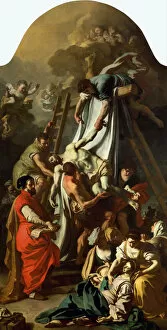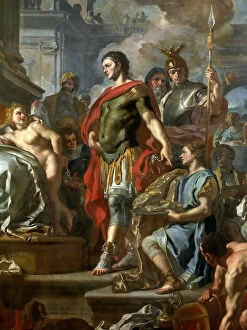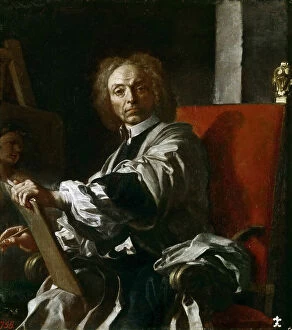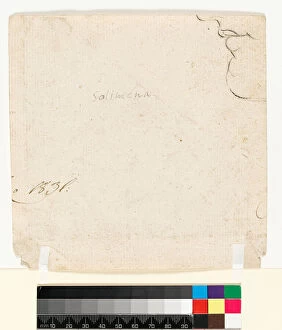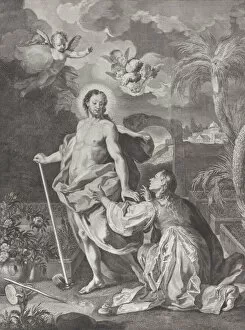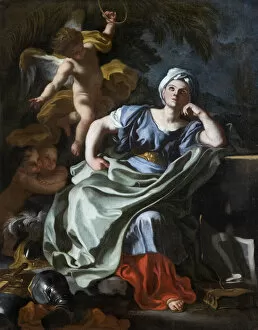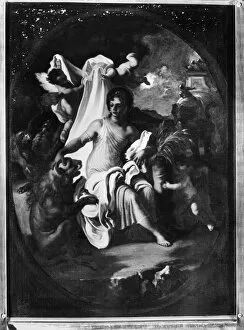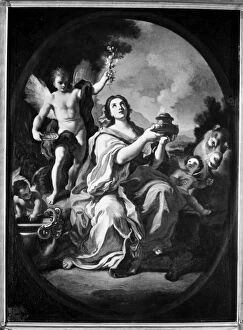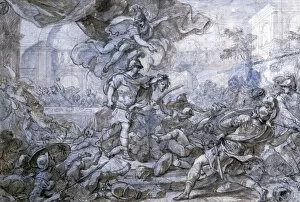Solimena Collection
Francesco Solimena, a renowned artist of the 18th century, left an indelible mark on the art world with his incredible works
All Professionally Made to Order for Quick Shipping
Francesco Solimena, a renowned artist of the 18th century, left an indelible mark on the art world with his incredible works. One such masterpiece is "The Descent from the Cross, " created in 1729. In this painting, Solimena skillfully captures the emotional intensity of Christ's crucifixion and subsequent descent. As we delve deeper into Solimena's artistic journey, we discover intriguing hints about his creative process. On one study sheet, slight ink scribbles catch our attention; could they be drapery studies? Perhaps these sketches were experiments to perfect the flow and movement of fabric in his compositions. Flipping over to the back of another paper, we find a drawing that predates 1747. Executed in graphite, it showcases Solimena's versatility as he explores different mediums and techniques. The verso reveals yet another surprise – a shepherd blowing a pipe captured delicately with red chalk strokes. Solimena's talent extends beyond mere studies; he also excelled at creating captivating portraits. His depiction of Saint Louis of France demonstrates his ability to capture not only physical likeness but also inner character through oil on canvas. In another notable work titled "Noli me tangere, " created between 1730-39 by Pietro Monaco under Solimena's influence, we witness an emotionally charged scene depicting Mary Magdalene encountering Jesus after his resurrection. This collaboration highlights Solimena's impact on other artists during this period. "The Birth of the Virgin" is yet another testament to Solimena's creativity and imagination. Painted around 1690, it showcases his mastery in portraying religious subjects with grace and elegance. However, not limited to religious themes alone, it also explored societal dynamics through portraiture.

